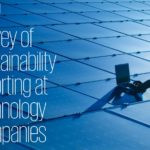EU-funded survey on the environmental performance of 65 European manufacturing companies published today / New approach applies rules of financial markets to environmental performance by companies / A company creates value only if it uses an environmental resource more efficiently than its competitors.
Imperial Chemical Industries uses its environmental resources 6.5 times more efficiently than the Finish chemicals company Kemira. Centricas eco-efficiency is 3.5 times above the eco-efficiency of Scottish & Southern Energy. BP and Shell do not even achieve one fifth of the eco-efficiency with which resources are used in the EU15 on average and rank last in terms of Sustainable Value. Put differently: if the resources BP and Shell are using, were given to average EU15 companies an extra 300 billion of gross domestic product (GDP) would result.
The EU-funded ADVANCE study which is being published today provides such precise monetary statements about corporate environmental performance. For the first time, researchers manage to express corporate environmental performance in the same terms that have been standard in financial performance assessment for decades.
The ADVANCE project has been conducted by researchers of the University of St Andrews and the Sustainable Development Research Centre (SDRC) in the United Kingdom, the Institute for Futures Studies and Technology Assessment (IZT) in Berlin, Germany and four European eco-rating agencies. The project team assessed the environmental performance of 65 European companies using the Sustainable Value approach. The Sustainable Value-approach was used as it offers two particularly interesting characteristics: first, it assesses corporate environmental performance in monetary terms (i.e. Euro). Secondly, it is inline with the logic of financial markets and thus translates corporate environmental performance into the language of managers and investors.
The Sustainable Value approach has been developed by the economist Prof Frank Figge (University of St Andrews & SDRC) and environmental scientist Dr Tobias Hahn (IZT), the two initiators of the ADVANCE-Project. ADVANCE is the first broad-scale application of their approach. The underlying logic of the Sustainable Value approach is simple: A company only creates value with an environmental resource, such as water, if it generates more return with that resource than other companies, explains Frank Figge. For example, AstraZeneca used 5.7 Mio m3 water in 2003 and generated a gross value added of about 9 billion . With the same amount of water, the EU15 would have only produced a gross domestic product of 236 Mio . Benchmarked against the EU15 average, the water use of Astra Zeneca thus generated a value of about 8.8 billion .
AstraZeneca is only one of seven British companies included in the survey. Out of that seven, it is the only company that used its resources more efficiently than the EU15 on average. AstraZenecas eco-efficiency is twice as high as the efficiency of the EU15 on average but still lower by a factor of two compared to the industry leader, the Danish pharmaceutical company Novonordisk. Other British companies perform rather poorly when assessed against the EU15 average: Centrica and Scottish & Southern Energy generated a negative Sustainable Value of -6.5 billion and -12 billion respectively, but still rank second and seventh among the thirteen utility companies included in the project. With a negative Sustainable Value of -4.6 billion , BG Group is best of class among the oil & gas companies analysed. This demonstrates that the oil & gas industry is a highly resource intensive business and that BG Group´s focus on gas pays off. Imperial Chemical Industries almost reached benchmark level and ranks first among the chemical companies featured in ADVANCE.
The company that used its environmental resources the most efficiently in 2003 is Airbus in fact four times more efficient than the EU15 on average. However, this figure only considers the production of airplanes and does not take into account the use phase of planes. As mentioned above, utility and oil & gas companies consistently generated the worst results.
ADVANCE takes into account the following seven environmental indicators based on the data that companies publish on a voluntary basis: water use, waste generated, emissions of carbon dioxide, nitrogen oxide, sulphur oxide as well as of volatile organic compounds and methane. Dr Tobias Hahn, senior researcher at the Berlins IZT, emphasises: The results are based on a transparent assessment process and show precisely which companies are using our scarce environmental resources in a way to generate the highest possible economic return. The large performance spread within sectors clearly shows which companies are environmental laggards.
The authors of ADVANCE came to one other, rather disheartening conclusion, as Prof Frank Figge points out: The number of European manufacturing companies that publish reliable environmental figures is alarmingly low.
The Sustainable Value approach applies and extends the logic behind financial analysis to express corporate environmental performance in monetary terms. It is thus fundamentally different from the common practise in corporate environmental assessments, which are largely based on questionnaires. The ADVANCE-study demonstrates the real-world applicability of the Sustainable Value approach. Martin Persson, analyst at GES Investment Services in Stockholm, one of the rating-agencies involved in ADVANCE, comments: The Sustainable Value approach is a very important methodological step. It allows us to support the results of our ratings with monetary figures. From our point of view the Sustainable Value approach is a milestone for integrating corporate environmental assessment and financial markets.



